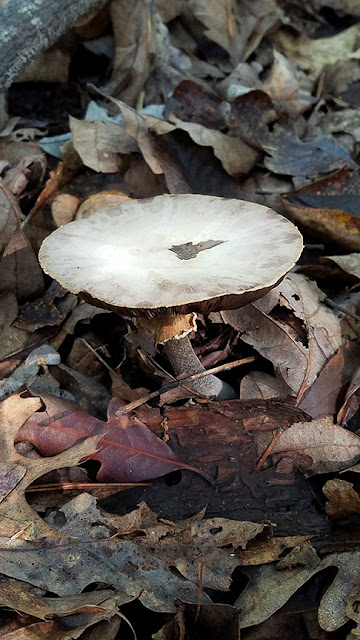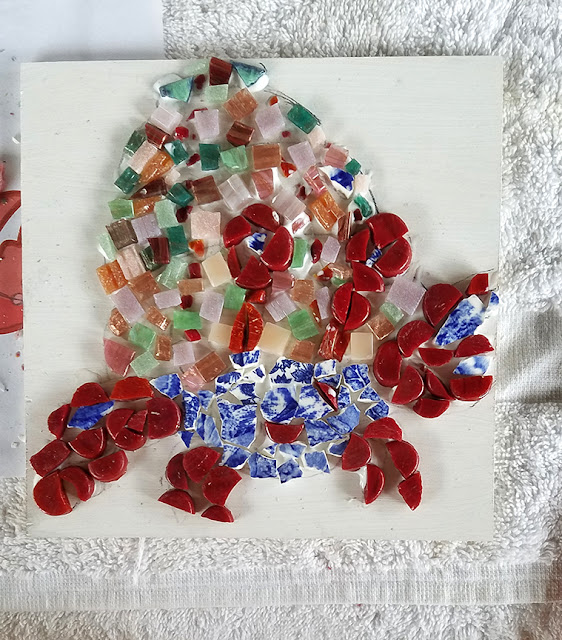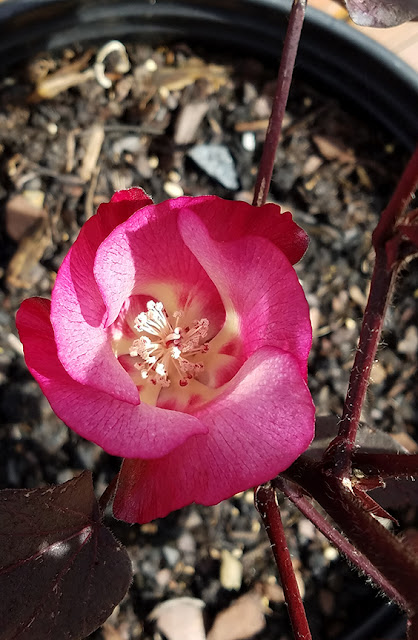 |
| Agapanthus 'Galaxy Blue' |
The first flower scape of Agapanthus 'Galaxy Blue' was devoured by deer
in early summer, and with it being so dry, it is only now that the plant
has decided to re-bloom. Its deep blue flowers complement the red
bush Salvia next to it. I kept thinking this Salvia was 'Windwalker Royal Red' and referred to it as such, but today I ran across the plant label (I save them so I can later identify the variety, but I sometimes lose track of them) and found out it is actually a red bush Salvia 'Maraschino.'
 |
| Red bush salvia |
I was away the week before, attending the ASBA Annual Conference in Mobile, AL and missed posting at Carol Michel's May Dreams Garden's "Bloom Day" on the 15th. When I tried to post, I had trouble loading the images onto my blog. It took a while to figure out how to change the settings to fix the problem, so it's only now that I'm catching up with October Bloom Day.
The pink Muhly grasses are sporting their feathery plumes as the leaves begin to turn--amazing what a transformation can take place in one week!
 |
| Herb's bed in October. |
The Verbascum 'Southern Charm' my sister gave me is re-blooming, and the few Chrysanthemums that didn't get eaten by deer over the summer are also in bloom. The red variety is very pretty; I bought the orange one at Lowes' recently and am looking for a spot to plant it in the ground.
 |
| Verbascum 'Southern Charm' |
 |
| Red Chrysanthemums |
 |
| Orange Chrysanthemum. |
The yellowwood tree ( Cladrastris kentukea) in the west side had turned gold when I got home last week, and this week the hickories in the woods behind our house are turning. The oaks are just starting show a bit of color.
 |
| West side bed with yellowwood tree turning gold. |
 |
| The woods in back from the deck. |
 | |
| The back yard from the west side. |
The aromatic asters are starting to bloom, but aren't fully open yet. My oldest clump seems to be hollowing out in the center, an indication that it will need to be broken up and re-planted next spring. Two other clumps that were separated and planted in other beds aren't making much of a show yet.
 |
| Aromatic asters (Symphyotrichum oblongifolius) |
I brought in most of my tender houseplants before leaving on my trip, just in case there might be a frost while I was gone. When I got back from my trip, the yellow hibiscus greeted me with lots of flowers--I rarely see this many at one time.
 |
| Yellow hibiscus. |
I wonder if there will be any flowers in my garden for November Bloom Day? Surely the first frost will come before then.

















































